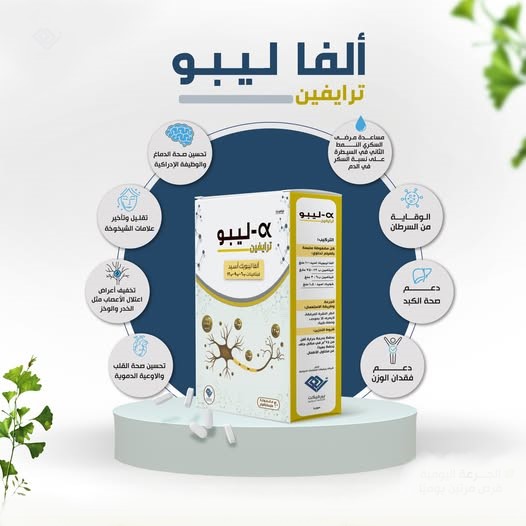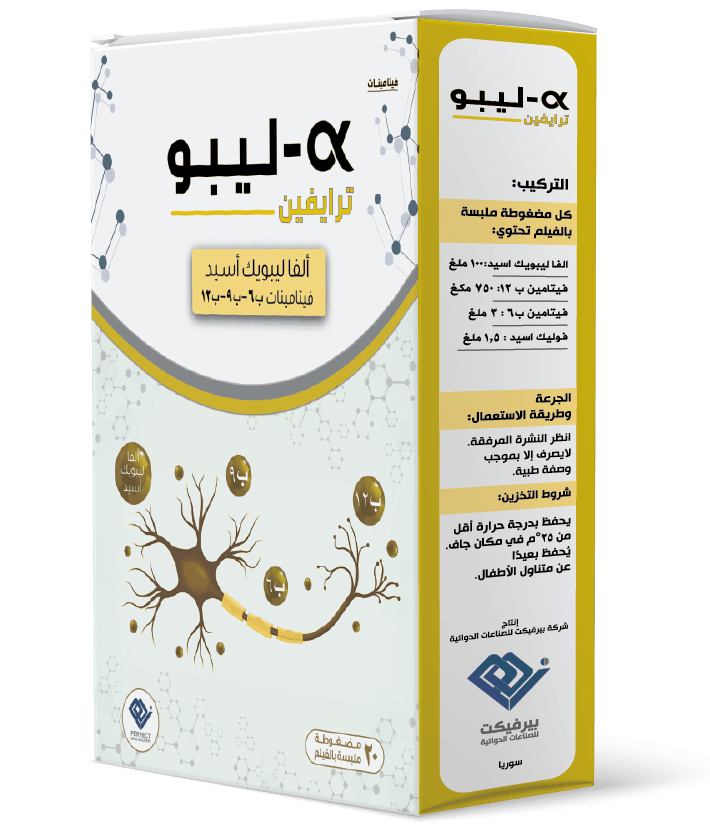Benefits of Alpha Lipoic Acid: A Multi-Functional Antioxidant for Body Health.
Alpha lipoic acid (ALA) is a natural antioxidant compound and is characterized by being a fat- and water-soluble antioxidant that readily crosses biological membranes, thus reaching all cell compartments. Lipoic acid is a small molecule that contains two oxidized or reduced thiol groups. Its oxidized form is usually identified as alpha lipoic acid (AL) or simply lipoic acid (AL), and the reduced form of lipoic acid is known as dihydrolipoic acid (DHLA). Lipoic acid is the predominant form that reacts with reactive oxygen species (ROS) and inactivates free radicals. Lipoic acid is naturally found in mitochondria where it binds to the E2 subunit and acts as a coenzyme for pyruvate dehydrogenase and alpha-ketoglutarate dehydrogenase (two mitochondrial enzymes involved in glucose metabolism and energy production). LA acts as an antioxidant capable of directly scavenging ROS, regenerating endogenous antioxidants such as glutathione by 30-70%, vitamins E and C, and possessing metal chelating activity leading to decreased production of reactive oxygen species. Its oxidized form is usually identified as alpha lipoic acid (AL) or simply lipoic acid (AL), and the reduced form of lipoic acid is known as dihydrolipoic acid (DHLA). Lipoic acid is the predominant form that reacts with reactive oxygen species (ROS) and inactivates free radicals.

Lipoic acid is naturally found in mitochondria where it binds to the E2 subunit and acts as a coenzyme for pyruvate dehydrogenase and alpha-ketoglutarate dehydrogenase (two mitochondrial enzymes involved in glucose metabolism and energy production). LA acts as an antioxidant capable of directly scavenging ROS, regenerating endogenous antioxidants such as glutathione by 30-70%, vitamins E and C, and possessing metal chelating activity leading to decreased production of reactive oxygen species.
Uses and Benefits of Alpha Lipoic Acid
1. Endogenous Antioxidant Support
LA is a powerful antioxidant capable of scavenging free radicals, as well as recycling endogenous antioxidants such as glutathione, and vitamins E and C.
2. Diabetes and its Complications
Hyperglycemia leads to oxidative stress, which is associated with excessive production of oxygen free radicals in mitochondria which in turn activate intracellular pathways (e.g., protein kinase C and hexosamine pathways) and cause neuronal and endothelial damage. Studies have shown that ALA has prevented the destruction of beta cells, and LA has improved glucose uptake in insulin-resistant and insulin-sensitive muscle tissue. Its antioxidant effects may be particularly beneficial in slowing the progression of diabetic complications such as diabetic neuropathy. It reduces numbness and tingling pain in the feet and legs and helps protect the retina from diabetic complications.
3. Cardiovascular disorders
Oxidative stress is responsible for the development of excessive oxidative stress in endothelial cells and has been shown to elevate proinflammatory cytokine levels (e.g., TNF-a, IL-18) and mediate insulin receptor degradation via MAPK cascades. of many cardiovascular diseases, such as hypertension, ischemia, heart failure, and atherosclerosis. A major factor in the development of these diseases is the overproduction of reactive oxygen species, along with decreased bioavailability of nitric oxide (NO). Since nitric oxide regulates the elasticity of the blood vessel wall and alpha-lipoic acid promotes the synthesis of nitric oxide in endothelial cells, it has also been suggested that alpha-lipoic acid inhibits renal and vascular overproduction of endothelin-1, a vasoconstrictor produced by the endothelium. Alpha lipoic acid’s ability to raise tissue glutathione levels and prevent harmful sulfhydryl group modification in Ca2+ channels has provided the basis for its therapeutic application against hypertension.
4. Liver health support
LA enhances glucose utilization improves blood sugar control, and plays a key role in liver detoxification mechanisms due to its role as an antioxidant and metal chelator.
5. Neurological and cognitive health support
LA has been shown to improve glucose transport from the blood into cells, and the increased amount of glucose transported into cells increases energy availability in the brain. It also protects the nerves and brain from free radical damage.
6. Alzheimer’s disease
Alzheimer’s disease is a neurodegenerative disease, primarily initiated by an imbalance between the formation and removal of amyloid-β (Aβ), and is characterized by the accumulation of abnormal neuronal plaques and tangles of hyperphosphorylated tau protein. In addition to the role of metal ions, which are toxic to the nervous system and cause oxidative stress, In Alzheimer’s disease, alpha lipoic acid (ALA) has been described as a water- and fat-soluble antioxidant that can cross the blood-brain barrier to reach the central nervous system.
Therefore, ALA supplementation may be beneficial in Alzheimer’s disease because it can improve mitochondrial function by acting as a cofactor in mitochondrial enzymes and an antioxidant. Studies have shown that ALA can protect hippocampal neurons from both amyloid-β and Fe/H2O2-induced toxicity and that its metal-binding properties may increase the extraction of Aβ peptides from cortical areas.
7. Cataract
Since ALA is a water- and fat-soluble antioxidant, it penetrates the eye tissue and destroys free radicals that cause protein changes that lead to cataracts. It also protects the function of mitochondria in the eye and increases the protective activity of glutathione
8. Painful bladder syndrome
Interstitial cystitis (IC) is a chronic syndrome characterized by symptoms of urinary urgency/frequency, pelvic pain, and difficulty urinating in the absence of bacterial infection or other identifiable pathology. Tricyclic antidepressants such as amitriptyline are commonly used in the treatment of vulvodynia and painful bladder syndrome (PBS)/IC.
Recently, the use of ALA with amitriptyline in the treatment of patients with painful bladder syndrome (PBS) has been shown to improve outcomes and may allow for a lower dose of amitriptyline, which may result in fewer side effects. Also, alpha-lipoic acid has been shown to reverse the damaging effects of high levels of oxidative stress in inflamed bladder tissue due to its strong antioxidant activity.
9. Polycystic ovary syndrome
Recent evidence suggests that oxidative stress is increased in women with PCOS due to increased production of free radicals followed by decreased levels of antioxidants in the blood and antioxidant enzyme activity. Increased oxidative stress appears to exacerbate insulin resistance.
ALA plays a role in regulating glucose and lipid metabolism by stimulating glucose uptake through intracellular redistribution of glucose transporters GLUTI and GLUT4.
10. Migraine
A reduction in the number, duration, and severity of migraine attacks was observed when using a dose of 600 mg for three months.
11. Heavy metal poisoning
One of the most important activities of linoleic acid is its ability to eliminate toxic metals and increase intracellular glutathione levels. Glutathione plays an important role in the body’s ability to eliminate a wide variety of toxins and toxic metals.
12. Reducing and delaying signs of aging
Free radicals are believed to be responsible for many signs and symptoms of aging as well as chronic diseases that come with aging. By destroying free radicals, alpha lipoic acid can protect our bodies from many age-related problems.
13. Effect of alpha lipoic acid on muscle damage
The study showed that (ALA) reduces injury resulting from oxidative stress by modifying the antioxidant response in trained men performing exercises that cause muscle damage, by significantly increasing glutathione (GSH) levels in red blood cells, in addition to increasing the enzymes glutathione reductase (GR) and glutathione peroxidase (GPx).
14. Other uses:
Alpha lipoic acid is used as an effective tool for treating glaucoma, burning mouth syndrome, stroke, multiple sclerosis, and Alzheimer’s disease. Studies have been conducted on the effectiveness of this antioxidant in treating these conditions.

